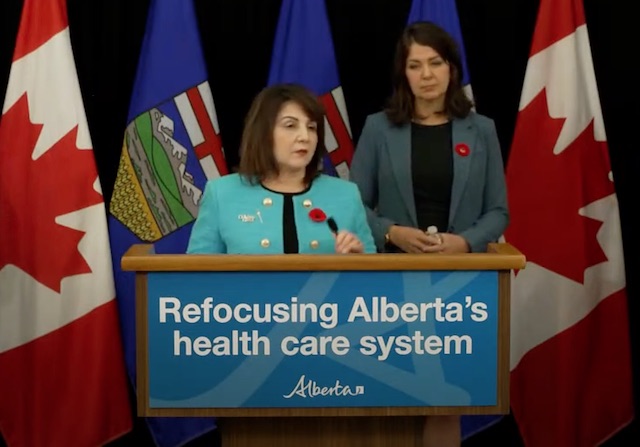Addictions
A city divided: Homelessness and drug crisis fuel tensions in Nanaimo
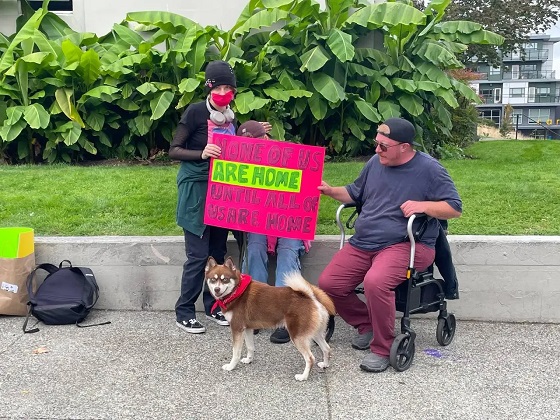

By Alexandra Keeler
Nanaimo, a city of approximately 100,000 situated on the eastern coast of Vancouver Island, has become a focal point in B.C.’s drug crisis. Already this year, the city has lost 68 residents to drug-related deaths.
This summer, the Nanaimo Area Public Safety Association urged city residents to come forward with information about assaults on the city’s homeless population.
The volunteer-led residents’ association was investigating claims that motorists were throwing objects at people experiencing homelessness, according to association director Collen Middleton.
“It’s not that I don’t want to believe that it’s happening — because I believe it. But there’s no evidence,” Middleton said. “It’s most likely the outreach workers, other homeless individuals or people in the street drug community with access to vehicles, like drug runners.”
These alleged assaults on homeless individuals — and the controversy surrounding them — are reflective of a broader crisis in the B.C. community.
Nanaimo, a city of approximately 100,000 situated on the eastern coast of Vancouver Island, has become a focal point in B.C.’s drug crisis. Already this year, the city has lost 68 residents to drug-related deaths. That represents five per cent of all opioid deaths in the province, despite the city being home to just two per cent of its population.
The city’s drug issues are exacerbated by a deepening housing crisis, which is the result of a shortage of shelter beds, growing homeless population and closure of support services — all of which are fueling tensions in the community.
‘Speak up’
Middleton, who moved with his family to South Nanaimo from Calgary in July 2021, says he was shocked by all the issues he saw in his neighbourhood. “Within a month we had somebody overdose and die on the other side of our garage,” he said.
Middleton found drug paraphernalia — such as needles and dime bags with drug residue — in his kids’ play area in their own backyard.
A break-in — where $5,000 worth of items were stolen from his garage — finally prompted Middleton to take action. He joined the local Facebook group Thieving Nanaimo, which has 25,000 members, and the board of the Nanaimo Area Public Safety Association.
In February, the association published a 52-page report detailing various incidents in the community, including theft, fires and property damage.
These incidents include regular break-ins and thefts at downtown businesses such as Fitz Ave Lingerie & Accessories Boutique, Red Shelf Decor and Fascinating Rhythm.
Fitz Ave Lingerie eventually installed 15 cameras and an alarm system that immediately notifies police of new incidents. It also keeps Naloxone kits on site to address drug use and overdoses in the store’s fitting rooms.
In 2023, community residents also raised concerns over the operation of an unsanctioned, “peer-supervised” drug consumption site on Nicol Street, which was run by the Nanaimo Network of Drug Users. The city labeled the property a “nuisance” but imposed no penalties. The site was ultimately shut down by its operators, who blamed the community. The operators faced no consequences for the nuisance designation, says Middleton.
“If the public didn’t speak up … I think we’d be in worse shape today,” said Middleton.
Subscribe for free to get BTN’s latest news and analysis, or donate to our journalism fund.
‘Bureaucratic hoops’
Mike Raey, a Nanaimo resident who has been intermittently homeless for the past two years, says the city is “not set up to help people who actually want the help.”
Raey, who struggles with alcohol addiction, currently stays in a shelter and keeps his belongings in a friend’s nearby tent.
Access to basic amenities like food storage are crucial for people trying to recover from addiction and stay healthy, he says. He is critical of the bureaucratic “hoops” that unhoused individuals face when seeking housing assistance.
“They have all these empty buildings — utilize them,” he said. “If they’re not up to code, bring them up to code.”
But, in some respects, the city seems to be moving in the opposite direction.
In August, it closed the Social Centre at 290 Bastion Street, a drop-in site that provided food, survival gear and a safe space to the unhoused and people struggling with addiction.
A frontline harm-reduction worker in Nanaimo, whom Canadian Affairs agreed not to name given the person’s concerns it could compromise future funding arrangements, says the centre was closed due to a lack of funding and resources to properly staff and operate the centre.
“I’ve watched service after service shut down, bed after bed,” said Benjamin Quinn, a trans Nanaimo resident who struggles with mental health issues and housing precarity. “The last holdout … was the Social Centre.”
On Sept. 3, Quinn and his nieces gathered outside Nanaimo’s city hall to protest the closure of the Social Centre and other essential services.
In an interview with Canadian Affairs, Nanaimo Mayor Leonard Krog highlighted the financial constraints the city faces addressing issues of homelessness and addiction.
“Those are fundamental, essential provincial responsibilities,” Krog said. “We work pursuant to a memorandum with BC Housing,” he said, referring to the Crown corporation responsible for developing and administering subsidized housing in the province.
A January 2024 Memorandum of Understanding between the City of Nanaimo and B.C. government includes a commitment to create 100 new temporary housing spaces in the city.
On June 28, BC Housing announced that city-owned land at 1030 Old Victoria Road would become the site of a new Nanaimo Navigation Centre. This modular building will feature approximately 60 private sleeping units for homeless individuals who have successfully stayed in shelters.
The project was narrowly approved by Nanaimo City Council in a 5-4 vote. Some councillors and community residents opposed it, citing concerns about inadequate mechanisms for fostering communication and accountability between housing operators and the community.
Krog says he supports the housing-first strategy in general, but believes certain housing solutions give rise to their own problems.
“People destroy [houses] because some individuals need secure, involuntary care,” he said. “They attract drug dealers and create environments of violence, mayhem and human trafficking. They become a different kind of hellhole.”
“You need to deal with the hardest first,” he said. “They’re never going to wake up one morning and say, ‘Oh, gee, I want to go to detox and get healthy.’ It’s not going to happen.”
Both the BC NDP and BC Conservative Party, which are competing for voter support in the upcoming election, have pledged to introduce involuntary care for people with severe addiction and mental health issues, Canadian Affairs reported last week.
The Nanimo Navigation Centre is slated to open in Spring 2025, alongside 78 supportive homes at a former Travellers Lodge hotel in Nanaimo, which has been leased by the B.C. government.
In the meantime, only 15 per cent of Nanaimo’s homeless population have somewhere to sleep at night. The city currently has 76 emergency shelter beds in total, while a 2023 survey found there were at least 515 homeless individuals — a 19 per cent increase from 2020 and nearly 200 per cent increase from 2016.
Krog insists the shortage of emergency shelters cannot be resolved at the municipal level. “We are helping, and we’ve put some money in,” he said. “But we don’t collect income tax.”
This article was produced through the Breaking Needles Fellowship Program, which provided a grant to Canadian Affairs, a digital media outlet, to fund journalism exploring addiction and crime in Canada. Articles produced through the Fellowship are co-published by Break The Needle and Canadian Affairs.
Subscribe to Break The Needle. Our content is always free – but if you want to help us commission more high-quality journalism, consider getting a voluntary paid subscription.
Addictions
BC Addictions Expert Questions Ties Between Safer Supply Advocates and For-Profit Companies

By Liam Hunt
Canada’s safer supply programs are “selling people down the river,” says a leading medical expert in British Columbia. Dr. Julian Somers, director of the Centre for Applied Research in Mental Health and Addiction at Simon Fraser University, says that despite the thin evidence in support of these experimental programs, the BC government has aggressively expanded them—and retaliated against dissenting researchers.
Somers also, controversially, raises questions about doctors and former health officials who appear to have gravitated toward businesses involved in these programs. He notes that these connections warrant closer scrutiny to ensure public policies remain free from undue industry influence.
Safer supply programs claim to reduce overdoses and deaths by distributing free addictive drugs—typically 8-milligram tablets of hydromorphone, an opioid as potent as heroin—to dissuade addicts from accessing riskier street substances. Yet, a growing number of doctors say these programs are deeply misguided—and widely defrauded.
Ultimately, Somers argues, safer supply is exacerbating the country’s addiction crisis.
Somers opposed safer supply at its inception and openly criticized its nationwide expansion in 2020. He believes these programs perpetuate drug use and societal disconnection and fail to encourage users to make the mental and social changes needed to beat addiction. Worse yet, the safer supply movement seems rife with double standards that devalue the lives of poorer drug users. While working professionals are provided generous supports that prioritize recovery, disadvantaged Canadians are given “ineffective yet profitable” interventions, such as safer supply, that “convey no expectation that stopping substance use or overcoming addiction is a desirable or important goal.”
To better understand addiction, Somers created the Inter-Ministry Evaluation Database (IMED) in 2004, which, for the first time in BC’s history, connected disparate information—i.e. hospitalizations, incarceration rates—about vulnerable populations.
Throughout its existence, health experts used IMED’s data to create dozens of research projects and papers. It allowed Somers to conduct a multi-million-dollar randomized control trial (the “Vancouver at Home” study) that showed that scattering vulnerable people into regular apartments throughout the city, rather than warehousing them in a few buildings, leads to better outcomes at no additional cost.
In early 2021, Somers presented recommendations drawn from his analysis of the IMED to several leading officials in the B.C. government. He says that these officials gave a frosty reception to his ideas, which prioritized employment, rehabilitation, and social integration over easy access to drugs. Shortly afterwards, the government ordered him to immediately and permanently delete the IMED’s ministerial data.
Somers describes the order as a “devastating act of retaliation” and says that losing access to the IMED effectively ended his career as a researcher. “My lab can no longer do the research we were doing,” he noted, adding that public funding now goes exclusively toward projects sympathetic to safer supply. The B.C. government has since denied that its order was politically motivated.
In early 2022, the government of Alberta commissioned a team of researchers, led by Somers, to investigate the evidence base behind safer supply. They found that there was no empirical proof that the experiment works, and that harm reduction researchers often advocated for safer supply within their studies even if their data did not support such recommendations.
Somers says that, after these findings were published, his team was subjected to a smear campaign that was partially organized by the British Columbia Centre on Substance Use (BCCSU), a powerful pro-safer supply research organization with close ties to the B.C. government. The BCCSU has been instrumental in the expansion of safer supply and has produced studies and protocols in support of it, sometimes at the behest of the provincial government.
Somers is also concerned about the connections between some of safer supply’s key proponents and for-profit drug companies.
He notes that the BCCSU’s founding executive director, Dr. Evan Wood, became Chief Medical Officer at Numinus Wellness, a publicly traded psychedelic company, in 2020. Similarly, Dr. Perry Kendall, who also served as a BCCSU executive director, went on to found Fair Price Pharma, a now-defunct for-profit company that specializes in providing pharmaceutical heroin to high-risk drug users, the following year.
While these connections are not necessarily unethical, they do raise important questions about whether there is enough industry regulation to minimize potential conflicts of interest, whether they be real or perceived.
The BCCSU was also recently criticized in an editorial by Canadian Affairs, which noted that the organization had received funding from companies such as Shoppers Drug Mart and Tilray (a cannabis company). The editorial argued that influential addiction research organizations should not receive drug industry funding and reported that Alberta founded its own counterpart to the BCCSU in August, known as the Canadian Centre of Recovery Excellence, which is legally prohibited from accepting such sponsorships.
Already, private interests are betting on the likely expansion of safer supply programs. For instance, Safe Supply Streaming Co., a publicly traded venture capital firm, has advertised to potential investors that B.C.’s safer supply system could create a multi-billion-dollar annual market.
Somers believes that Canada needs more transparency regarding how for-profit companies may be directly or indirectly influencing policy makers: “We need to know exactly, to the dollar, how much of [harm reduction researchers’] operating budget is flowing from industry sources.”
Editor’s note: This story is published in syndication with Break The Needle and Western Standard.
The Bureau is a reader-supported publication. To receive new posts and support my work, consider becoming a free or paid subscriber.
Dr. Julian M. Somers is director of the Centre for Applied Research in Mental Health and Addiction at Simon Fraser University. He was Director of the UBC Psychology Clinic, and past president of the BC Psychological Association. Liam Hunt is a contributing author to the Centre For Responsible Drug Policy in partnership with the Macdonald-Laurier Institute.
Addictions
Ottawa “safer supply” clinic criticized by distraught mother
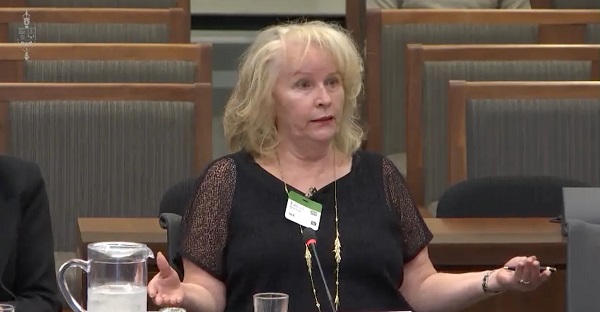
An Ottawa mother, who lost her daughter to addiction, is frustrated by Recovery Care’s failure to help her opioid-addicted son
Masha Krupp has already lost one child to an overdose and fears she could lose another.
In 2020, her 47-year-old daughter Larisa died from methadone toxicity just 12 days into an opioid addiction treatment program. The program is run by Recovery Care, an Ottawa-based harm reduction clinic with five locations across the city, which aims to stabilize drug users and eventually wean them off more potent drugs.
Krupp says she is skeptical about the effectiveness of the support and counseling services that Recovery Care claims to provide and believes the clinic was negligent in her daughter’s case.
On Oct. 22, the Ottawa mother testified before the House of Commons Standing Committee on Health, which is studying Canada’s opioid epidemic.
In her testimony, Krupp said her daughter was prescribed 30mg of methadone — 50 per cent more than the recommended induction dose — and was not given an opiate tolerance test before starting the program. Larisa received treatment at the Bells Corners Recovery Care location.
Krupp’s 30-year-old son, whom Canadian Affairs agreed not to name, has been a patient at Recovery Care’s ByWard Market location since 2021, where he receives a combination of methadone and hydromorphone, another prescription drug administered through the treatment program.
“Three years later, my son is still using fentanyl, crack cocaine and methadone, despite being with Dr. [Charles] Breau and with Recovery Care for over three years,” Krupp testified.
“About four weeks ago, I had to call 9-1-1 because he was overdosing,” Krupp told Canadian Affairs in an interview. “This is on the safer supply program … three years in, I should not be calling 9-1-1.”
Open diversion
Founded in 2018, Recovery Care is a partner in the Safer Supply Ottawa initiative. The initiative, which is led by Ottawa Public Health and managed by the nonprofit Pathways to Recovery, provides prescription pharmaceutical opioids to individuals who are at high risk of overdose.
Pathways to Recovery works with a network of service providers throughout the city — including Recovery Care — to administer safer supply.
Krupp says she supports the concept of safer supply, but believes it needs to be administered differently.
“You can’t give addicts 28 pills and say ‘Oh here you go,’” she said in her testimony. “They sell for three dollars a pop on the street,” she said, referring to the practice of some individuals selling their prescribed medications to fund purchases of more intense street drugs like heroin and fentanyl.
Krupp says she sees her son — and other patients of the program — openly divert their prescribed medications outside of the Recovery Care clinic in ByWard Market, where she parks to wait for him.
“[B]ecause there’s no treatment attached to [my son’s safer supply], it’s just the doctor gives him all these pills, he diverts them, gets the drugs he needs, and he’s still an addict,” Krupp said in her testimony.
Donna Sarrazin, chief executive of Recovery Care, told Canadian Affairs that Recovery Care has measures to address diversion, including security cameras and onsite security staff.
“Patients are educated at intake and ongoing that diversion is not permitted and that they could be removed from the program,” she said in an emailed statement.
“Recovery Care works to understand diversion and has continued to progress programs and actions to address the issues. Concerns expressed by the community and our teams are taken seriously,” she said.
Krupp says she has communicated her concerns about her son reselling his prescribed medications to his doctor, Dr. Charles Breau, both in-person and through faxed letters. “I never hear back from the doctor. Never,” she said.
Krupp also said in her testimony that police have spoken to her son about his diversion.
Breau did not respond to inquiries made to his clinical teams at Recovery Care or Montfort Hospital, a teaching hospital affiliated with the University of Ottawa.
Sarrazin said Breau is not able to comment on patient or family care.
In Krupp’s view, the safer supply program would be more successful if drug users were required to take prescribed medications under supervision.
“If he was receiving his hydromorphone under witnessed dosage and there was a treatment plan attached to it, I believe it would be successful,” she said.
Dr. Eileen de Villa, the City of Toronto’s medical officer of health, reinforced this point at the Oct. 22 Health Committee meeting. She said Toronto Public Health’s injectable opioid agonist therapy program — which combines observed administration with a treatment plan — has seen “incredible results.”
De Villa shared a case of a pregnant client who entered the program. “She went on to have a successful pregnancy, a healthy baby, has actually successfully completed the treatment, and is now housed and has even gained custody of her other children,” she said.
Subscribe for free to get BTN’s latest news and analysis, or donate to our journalism fund.
‘An affront to me’
Krupp also says Recovery Care fails to deliver on its promise of supporting patients’ mental health needs. Recovery Care’s website says its clinics offer “mental health programs which are essential to every treatment plan.”
Krupp and her son’s father have both requested a clear treatment plan and consistent counselling for their son. But he was started on safer supply after participating in only one virtual counselling session, she says.
She says Recovery Care has only one mental health counselor who services four of Recovery Care’s clinics. “If you’re getting $2-million-plus a year in funding, you should be able to staff each clinic with one on-site counselor five days a week,” she said.
Instead of personalized assistance, her son received “a sheaf of photocopies” offering generic services like Narcotics Anonymous and crisis helplines. “It’s almost an affront to me, as a taxpayer and a mother of an addict,” Krupp said.
Krupp says that, following her testimony to the parliamentary committee, Breau reached out to offer her son a mental health counseling session for the first time.
Sarrazin told Canadian Affairs that patients are encouraged to request counseling at any time. “Currently there is no wait list and appointments can be booked within 1 week,” she said in her emailed statement.
Class actions
Today, Krupp is considering launching a class-action lawsuit against Health Canada and the Government of Canada, challenging both the enactment of safer supply and the loosening of methadone dispensing requirements in 2017. She believes these changes contributed to her daughter’s death in 2020.
She is also considering joining an existing class-action lawsuit in B.C., which alleges Health Canada failed to monitor the distribution of drugs provided through safer supply programs.
The Pathways to Recovery initiative received $9.69-million in funding from Health Canada from July 2020 to March 2025. In June 2023, Health Canada allocated an additional $1.9 million to expand Ottawa’s safer supply program across five sites and improve access to practitioners, mental health support, housing and other services.
“I want to see that money being put to a recovery based treatment, not simply people going in and out and getting their medications and just creating this new sub-layer of addicts,” Krupp said.
This article was produced through the Breaking Needles Fellowship Program, which provided a grant to Canadian Affairs, a digital media outlet, to fund journalism exploring addiction and crime in Canada. Articles produced through the Fellowship are co-published by Break The Needle and Canadian Affairs.
Subscribe for free to get BTN’s latest news and analysis, or donate to our journalism fund.
-
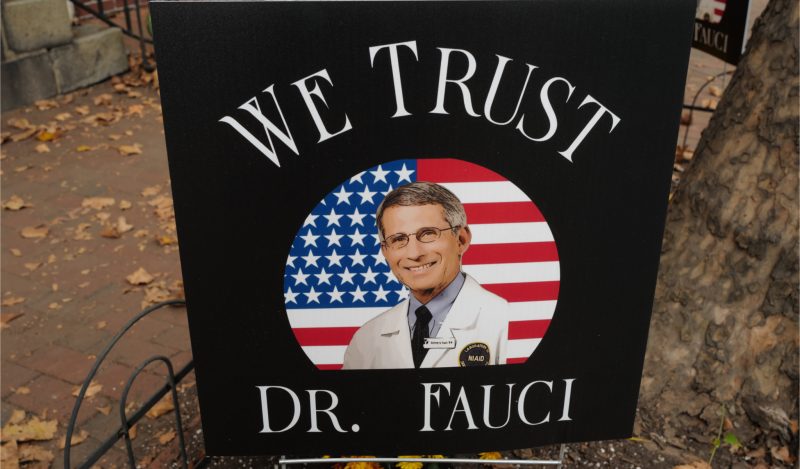
 Brownstone Institute2 days ago
Brownstone Institute2 days agoThe Most Devastating Report So Far
-

 Business2 days ago
Business2 days agoCarbon tax bureaucracy costs taxpayers $800 million
-
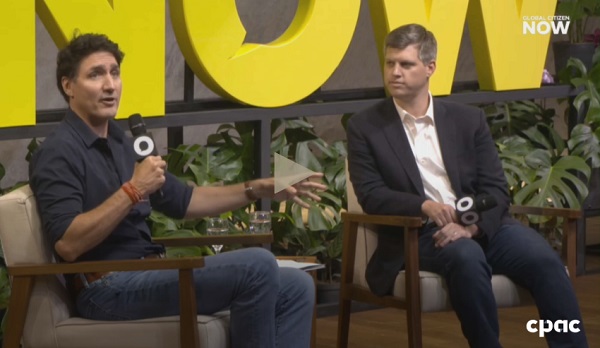
 ESG1 day ago
ESG1 day agoCan’t afford Rent? Groceries for your kids? Trudeau says suck it up and pay the tax!
-

 Daily Caller1 day ago
Daily Caller1 day agoLos Angeles Passes ‘Sanctuary City’ Ordinance In Wake Of Trump’s Deportation Plan
-

 John Stossel1 day ago
John Stossel1 day agoGreen Energy Needs Minerals, Yet America Blocks New Mines
-

 Alberta1 day ago
Alberta1 day agoProvince considering new Red Deer River reservoir east of Red Deer
-

 Addictions1 day ago
Addictions1 day agoBC Addictions Expert Questions Ties Between Safer Supply Advocates and For-Profit Companies
-
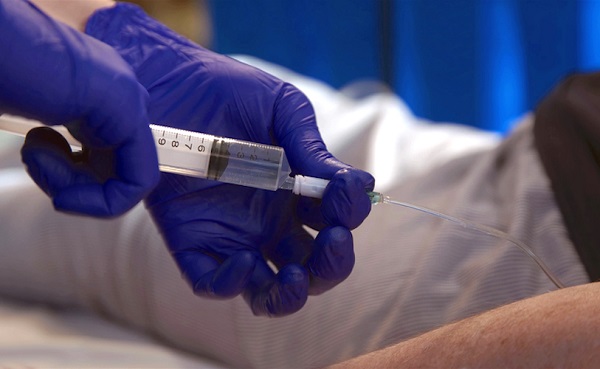
 MAiD2 days ago
MAiD2 days agoOver 40% of people euthanized in Ontario lived in poorest parts of the province: government data






